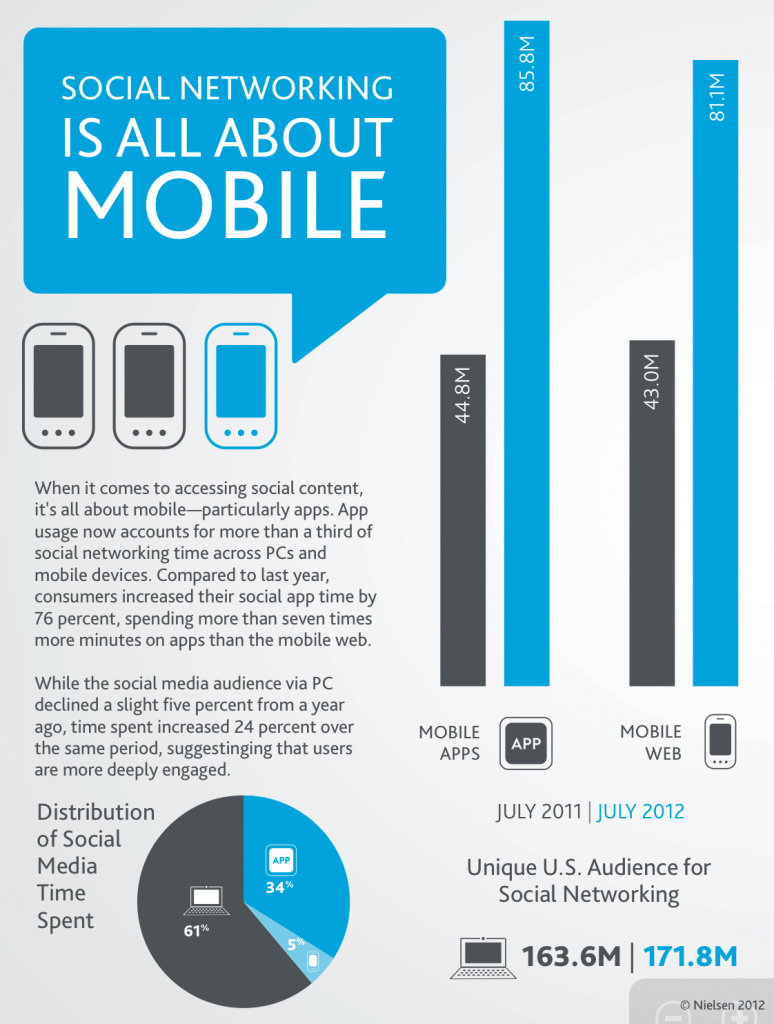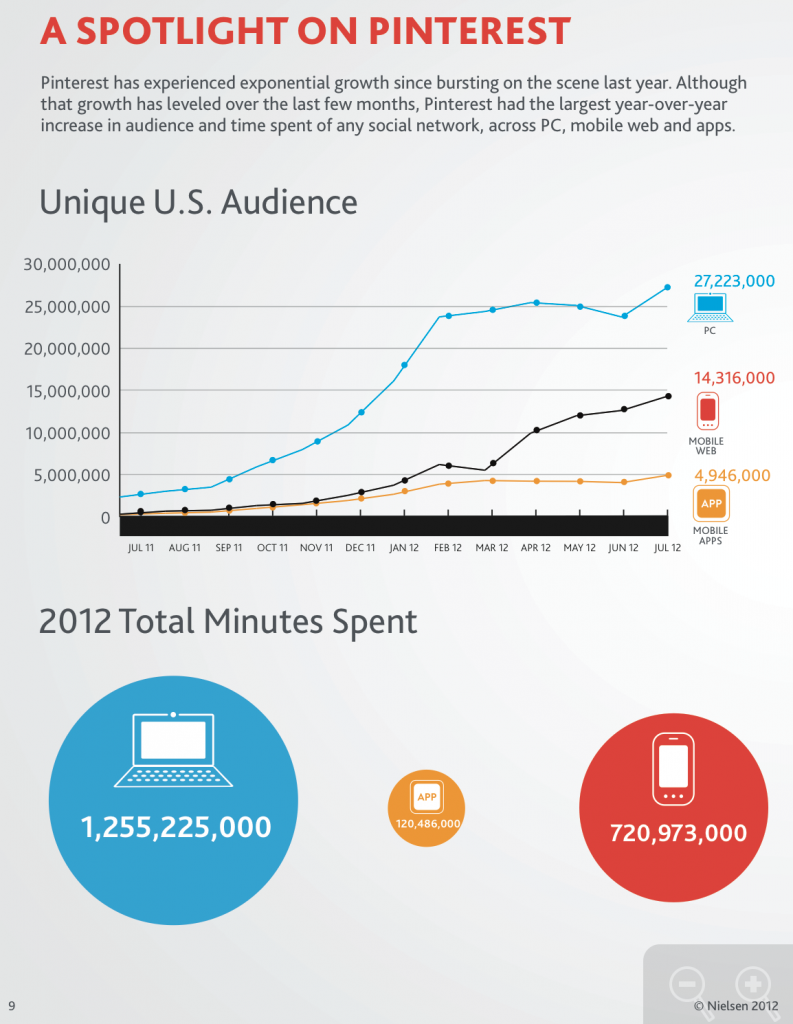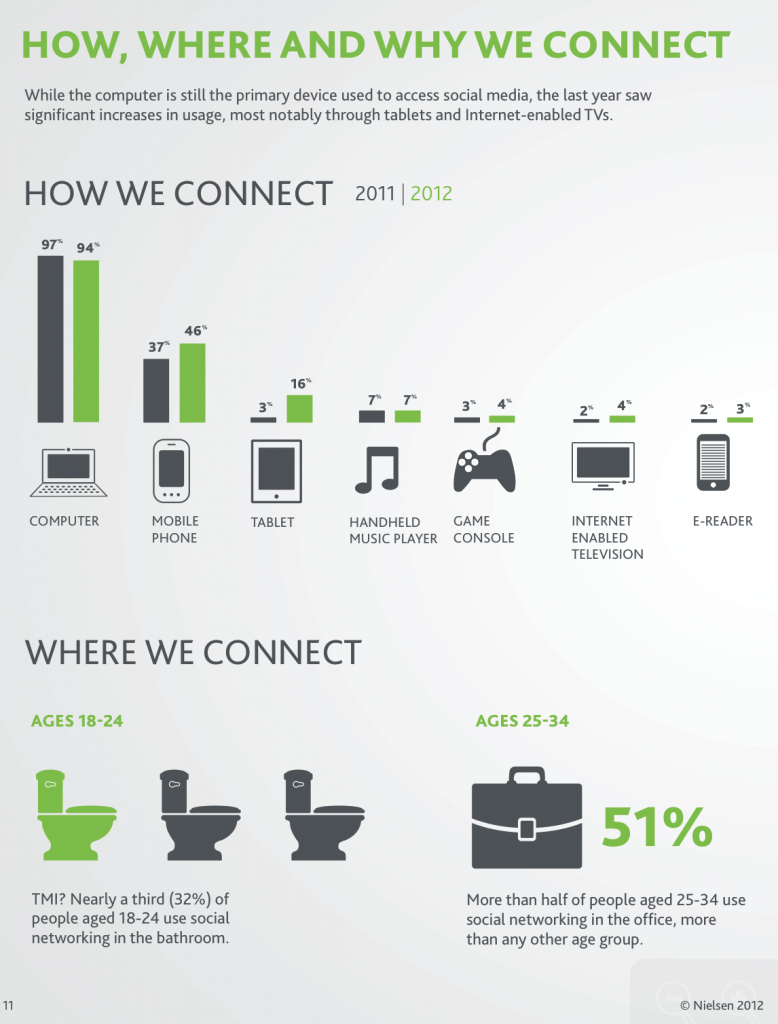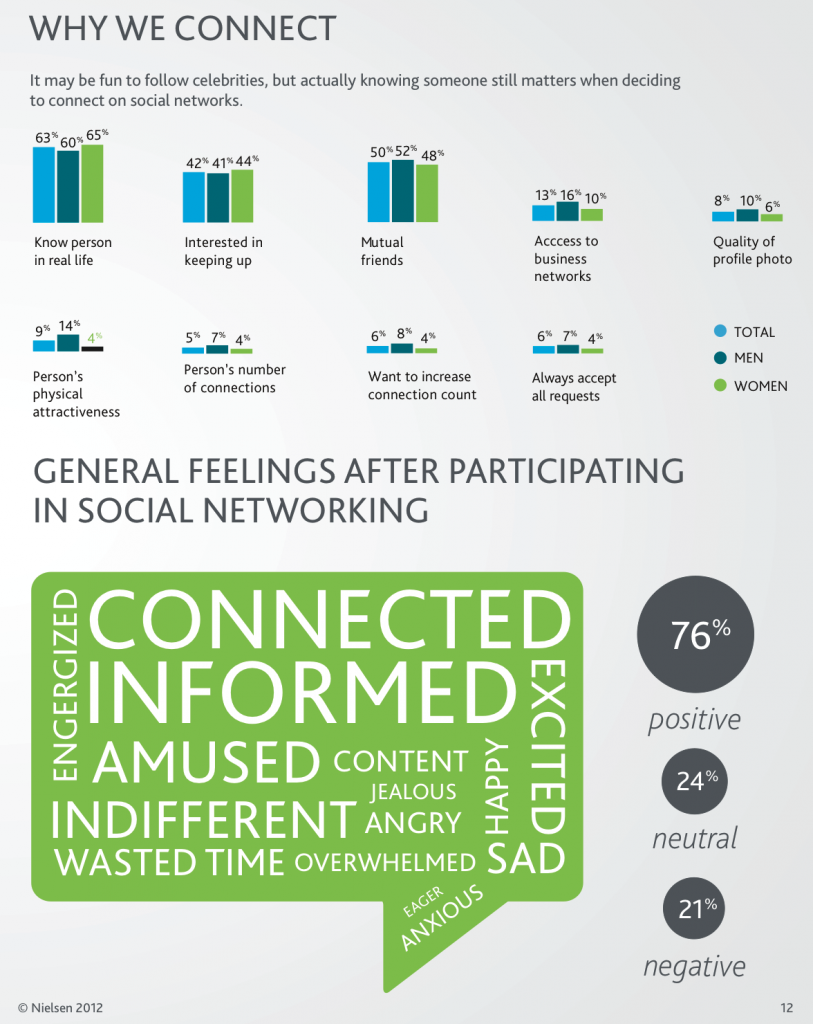
Source: GapingVoid
“The World Wide Web is the universe of network-accessible information, an embodiment of human knowledge.” – Tim Berners-Lee, Web inventor, founder, the World Wide Web Consortium (W3C), source
For years now, we’ve talked about the evolution of Web 2.0 and an era of a more open and social web. Certainly the web has become social. As to whether or not it’s more open, well that’s for a later discussion. With our time together now, I’d like to explore the idea of social media evolving the utility of the web beyond a system of Internet servers that support HTML formatted documents to that of a system of people in addition to HTML formatted documents. Obscure and debatable I know. But follow along with me for a moment.
Over the years social media has been the darling of marketers and would be experts. It’s not without good reason. Social media is exciting and transformative. It is something that we embrace as human beings and equally as professionals, we recognize its impact and opportunity. And, social media along with mobile represent the greatest growth areas for the Internet right now. But there’s more to it than hype.
The undercurrent of social media is as powerful as it is personal. People are becoming nodes of the network and it is through engagement and shared experiences and moments that bind us and information together. As a result, the idea of HTML documents as destinations seems almost antiquated in an era where dynamic experiences and engagement are personalized and optimized in what I call the EGOsystem. It’s the difference between a destination web, the web as we know it, and that of an experience, the web as it represents people, information, and utility.
Utility versus Destination: The Social Web by the Numbers
Nielsen and NM Incite released the 2012 Social Media Report recently and in it is an obvious but important observation, social media is coming of age. If attention is a key metric, then social networks are where attention spans go to roam. According to the report, consumers continue to spend more time on social networks than on any other category of sites.
20% of their total time online via personal computer (PC)
30% of total time online via mobile

Got a minute?
Most notably however is the sheer velocity of growth. Nielsen found that total time spent on social media in the U.S. across PCs and mobile devices increased 37% to 121 billion minutes in July 2012, compared to 88 billion in July 2011.
The Internet Likes Facebook, but an open relationship is a reality.
Facebook is still axis to the social web as the most-visited social network in the U.S. via PC (152.2 million visitors) and mobile apps (78.4 mil). Even though Facebook is home to 12% of the world’s population, other networks are vying for consumer attention. Twitter for example is up 13%, Pinterest is pinning with 1,047% growth, Google+ is showing promise with 80% rise in unique visitors, and Tumblr continues to “tumble for you” with a 55% surge.

Now showing on the small screen.
The mobile (s0cial) web represents the future of online engagement. This is one of the reasons that Facebook was plagued by speculation prior to and shortly after its IPO. It’s mobile strategy wasn’t fully defined or articulated. However, people are spending more time on mobile devices and the numbers speak for themselves. Mobile web usage is up 82% in 2012 over 2011 and mobile app usage has grown 85%. It’s interesting to note that time spent on PCs is down 4%.
Mobile Social Networking is the New Social Networking
Social media time spent still largely takes place on a PC. But time spent social networking in mobile apps now represents a third of overall social networking time, up from 22.8M in 2011 to 85.8m in 2012. As Nielsen notes, while social audiences on PCs declined 5% since 2011, time spent increased 24%, which suggests that users are more deeply engaged.
Now this is Pinteresting.
Yes. Pinterest is pinning with 1,047% growth. Nielsen found that Pinterest has experienced exponential growth over the last year. But this perhaps the last year we will see such spectacular growth from this fledgling. Nielsen also found that growth is leveling off. None the less, 2012 minutes spent across PCs, apps, and the mobile web is incredible. In terms of unique audience, Pinterest reached a high of 27 million unique users on PCs, 14 million on the mobile web, and almost 5 million via mobile apps.
How, where and why we connect.
The next web is mobile.
Proof is in the numbers of course. As we can see, consumers access social media from PCs mostly at 94% (down from 97% in 2011), mobile phones at 46% (up from 37%) and tablets at 16% (up from 3%). Surprise is an understatement when I think about how I felt when I saw the incorporation of toilets in the report. But, you can read more on that gem here.
The Psychology of Social.
It’s pretty clear why we embrace social media. It is after all a platform for self expression. It’s where we can share our experiences. It’s also a place where we can connect with people not only because of relationships but also because of interests. But why else do we connect? Well, Nielsen asked. Most people connect because they know someone in real life or because they share mutual friends. Business networks also factor in to connectivity. Human nature also permeates engagement, albeit at a smaller scale, tying profile photos, attractiveness, and number of connections to why people decide to connect.
The social web is just that, it’s social. But more importantly, social and mobile media are becoming the next web. Mobile, apps, and PCs are the platforms for which people build networks around relationships, information, and experiences. While visiting web sites still play an important role in how people spend time online, they also concentrate attention on the essence of engagement. In the process, people place social ahead of destinations as they set the foundation for the future of the next web…an online experience that fuses people, information, and mobile access (on demand) access.
Connect with me: Twitter | LinkedIn | Facebook | Google+
The End of Business as Usual is officially here…











think the next is consoles (the majority of my tv viewing is movies on netflix and now the only way i can get Walking Dead on my cable system is Xbox Video.. of course we will also have internet enabled touch screen televisions (for the kitchen for recipes, then back to cooking channel.. oh.. nice skillet.. click.. ups next day .. same frying pan @wolfgangbuzz uses, (slide, slide – here.. music videos..finger push, also shows same video on tv across room, adjust volume.. back to the dishes.. with control in the kitchen for the tv you are watching over the bar. oops.. phone rings.. push blue tooth enabled button on klitchen tv to answer mobile device on kichen tv (tablet).
great observations.. totally on point. Thank you for taking the time to compile a summary. =)
Excellent comment Steve. Thank you.
This is kind of obvious. If you follow Paul Adam`s line of thinking (in his book Grouped), the intimacy people look for on the web (get closer to their friends, considering the magic number of 150) will draw all the efforts to their mobile. Context is king, but intimacy is not. I spend more time in Facebook, but I also spend more time on Whatsapp. Maybe I spend more time on mobile facebook thanks to Whatsapp…
That’s different though Gustavo. The “magic” number of 150 is about engagement. This is about human beings as an information network. So it’s the overlay of 150 across interest graphs that create a more efficient and dynamic Web.
Great post, Brian! Assuming you’re both referring to the Dunbar Number?
Indeed…which is assumed at somewhere between 120-150
People at the intersection in a network are different to the way the internet works because there is a Blumler type uses and gratifcation negotiation involved. This is why I agree with you. It is yet another part of internet evolution in the image of humanity.
To be welcomed and yet we also need to be wary.
The human model is not always to be admired.
Indeed. Well stated.
I really like this flow, Brian. Think sometimes Social Media moniker got a bad rap early on (by the old guard) is because of the word media. Networking is active. Media, in many ways, is too passive (as much as it tries to be active, the active is still on us to engage, share thoughts, have discussions without fear). So, social networking has made it more relevant to not just the young souls, but the old souls as well. We’re merging generations here.
We’re also merging a simpler, communal way of life in our heavily saturated 24/7 world. Social Apps give us comfort. They give us familiarity and consistency of habit – and the good ones will provide ‘adaptations’ to keep us involved (bc we always will need to raise the bar, have better stimulation, fresh renewal, deeper skill, thought and knowledge level, etc). They give structure to a previously “everything is available, where do I start?” melee.
We’re also merging collaboration on a grand scale. From Destination to EGOsystem to hopefully an eventual…..WEGOsystem, which will bring us more collaborative, “creative destruction” (credit to Clay Christensen) when necessary and REAL social relevance with global community results (for the better I believe). Yes we’ll still have fringe players, polarizing groups, etc…
some may say I’m a dreamer, but I’m not the only…..
I’m just an OptimAList in action, Optimist in thought. Inclusion Fusion has begun to get fun.
I just love this comment. Thank you so much for putting so much thought, passion and creativity into it. Love the WEGOsystem!
This is very informative. Thank you, Brian for sharing!
Cheers Dave!
Amuses me when conclusions are drawn about a global phenomenon on the basis of US only figures. How daft is that!
Not sure I know what you mean, I have global data, by country, on my desk. I’m actually writing about it now and do every year.
Nice summary Brian. I think the social web has created a big data problem for the consumers because of the sheer number of ongoing activity. This is one reason different curation or niche networks are popping up trying to solve this problem for the individuals. It is no surprise that mobile is taking hold as a primary channel because of its personality factor. Still, people will need to determine how to filter the social web to maximize efficiency and importantly avoid the echo chamber. For me, the filter will by using other people as nodes and following their activity. My favourite activity to follow is comments because it leads to serendipitous topics and to further discovery of other interesting people. In other words, I like the idea of having a few communities on the social web that I trust and learn from.
Social media usage is increasing as more people go digital. It will be interesting to see how and where people continue to use social media and technology as more people go digital.
That’s what I always wanted to become a six million dollar man, lol, I am now a node of the network. I am not a bionic man but a nodeman, you will not find any new content if I am not connected. Brian you are a genius and yes this is exactly what is happening we are becoming the destination in the network. Nice data, thanks.
Thank you Anthony. Thanks for being the #nodeman!
With the following being the case . . .
“While visiting web sites still play an important role in how people spend time online, they also concentrate attention on the essence of engagement.”
. . . it seems to me that one of the most important questions that the owner of a web site could ever ask themselves every day is, “What can I create and publish here that will make my perfect prospects appear to be smart, sexy, funny, or resourceful by sharing it on their social media channels?”
When we cave to our natural tendency to operate from self delusion, we completely ignore the fact that people don’t spread the word about us and our sites because they want to help us. People don’t care about us more than they care about themselves. Them’s the breaks.
This is why they sort out whether or not they’re going to put your content/business in front of their list of friends/followers by asking, “Will people think I’m cool, intelligent or hilarious as the result of sharing this?” And the sharing goes rampantly wild when they can answer, “Yes”.
As business owners seeking social media influence, we have to be on a constant and never ending quest to help our perfect prospects be admired and cherished in the eyes of their social circle.
Thank you so much Brian for sharing all this killer data here that jack hammers home this reality of marketing online. 🙂
Mobile devices and social media fit together
perfectly as the focus of the most practical use that most people have for the
internet. Having a smartphone in your pocket means that you are never out of
touch with your social circle and it gives users access to sources of
information that they know that they can trust- their friends and family. For
this reason alone, it isn’t surprising that mobile social media is booming.
Love the blog! We are currently learning something about this in my digital marketing class at the University of Michigan-Dearborn. http://www.cob.umd.umich.edu/693400/
Just goes to show, every time you think you know something about social media, it changes and you have to learn new lessons.
so true.
My prediction is that we will see greater fragmentation. There are more channels, more options, more devices than ever before. And users and businesses are hitting critical mass – and many of them use social media in ways and languages you have never dreamed of. So if you work in social media itself, my advice for this year is think of the bigger picture – not just the bit you work in.
I believe this article is great for older adopters of social media to read. Social media is very fast and upcoming so many older and perhaps more profession companies may think that social media wouldn’t be as effective for them or for their target market. However, by reading this article, I believe that many of them would reconsider their way of doing things. To move ahead is to think ahead. Personally, I found all the numbers and statistics of Nielsen were extremely interesting and it truly shows how people and interactions by Web 2.0. Would you suggest to companies, just entering social media, any specific social media apps is the best medium to begin with?
I believe this article is great for older adopters of social media to
read. Social media is very fast and upcoming so many older and perhaps
more professional companies may think that social media wouldn’t be as
effective for them or for their target market. However, by reading this
article, I believe that many of them would reconsider their way of doing
things. To move ahead is to think ahead. Personally, I found all the
numbers and statistics of Nielsen were extremely interesting and it
truly shows how people and interactions are changing by Web 2.0. What would you suggest to new companies entering into social media, is the best social media medium to begin with? Whether that’s Facebook, Twitter, or something else?
Hello Jennifer. Thank you for the comment…it’s a difficult question to answer because it depends on how you see social media contributing to your business.
Awesome visuals. I like the image and stats on how we connect. I see mobile phones and game consoles growing significantly within the next few years. Play Station and Xbox are making it easier for people to communicate and interact on a more personal level.